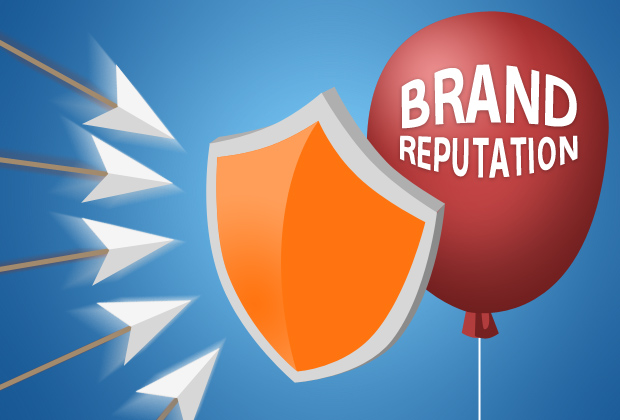In today’s highly competitive business landscape, brand reputation stands as a cornerstone of success. It encompasses how a brand is perceived by its customers, stakeholders, and the general public. Building and maintaining a positive brand reputation is vital for businesses aiming to thrive in the market.
What is Brand Reputation? And Why Does It Matter?

Brand reputation is not just about having a good image; it’s about fostering trust, credibility, and loyalty among consumers. A positive reputation can lead to increased customer loyalty, higher sales, and better relationships with stakeholders. On the contrary, a negative reputation can tarnish a brand’s image, leading to a loss of customers and revenue.
Building BR
Building a strong brand reputation requires consistent effort and a focus on quality. Brands must deliver on their promises and ensure that every interaction with customers reflects their values and ethos. Transparency and trustworthiness are crucial elements in building a positive brand reputation, as consumers today value authenticity and honesty.
Monitoring Brand Reputation
Monitoring brand reputation involves keeping a close eye on how the brand is perceived both online and offline. Online reputation management tools can track mentions, reviews, and sentiment across various platforms, allowing businesses to address any issues promptly. Offline strategies such as customer surveys and market research also play a vital role in understanding public perception.
Managing BR
Managing brand reputation involves addressing both positive and negative feedback effectively. Responding to customer inquiries and resolving complaints in a timely and professional manner can help mitigate any damage to the brand’s reputation. Additionally, having a crisis management plan in place can help navigate through challenging situations and protect the brand’s image.
Impact of Brand Reputation
A positive BR can have a profound impact on customer perception and business growth. Consumers are more likely to trust and purchase from brands with a good reputation, leading to increased sales and market share. Furthermore, a strong brand reputation can attract top talent, foster partnerships, and create expansion opportunities.
Examples of Successful Brand Reputation Management
Several brands have excelled in managing their reputation effectively. Companies like Apple, Nike, and Coca-Cola have built iconic brands known for their quality, innovation, and customer-centric approach. By consistently delivering exceptional products and experiences, these brands have earned the trust and loyalty of millions worldwide.
Strategies for Improving Brand Reputation
Improving BR requires a multifaceted approach that includes social media engagement, customer service excellence, and community involvement. Brands can leverage social media platforms to engage with their audience, share valuable content, and address customer concerns in real time. Providing exceptional customer service at every touchpoint can also help enhance brand perception and foster loyalty.
The Role of SEO in Brand Reputation
SEO plays a significant role in shaping BR in the digital age. By optimizing their online presence, brands can improve their visibility in search engine results and control the narrative surrounding their brand. Effective SEO strategies can help manage online reviews, address negative content, and promote positive brand messaging, ultimately shaping consumer perception.
Conclusion
Brand reputation is a valuable asset that can make or break a business in today’s competitive marketplace. By prioritizing transparency, consistency, and customer satisfaction, brands can build and maintain a positive reputation that drives growth and fosters long-term success.
Ready to take your brand reputation management to the next level? Request a demo from AIM Technologies today and discover how our innovative solutions can help you monitor, manage, and enhance your brand’s reputation effectively.
FAQs
How long does it take to build a positive BR?
- Building a positive BR is a continuous process that requires time, effort, and consistency. While there is no fixed timeline, businesses can start seeing results by focusing on delivering exceptional products and experiences consistently.
Can a negative BR be repaired?
- Yes, a negative BR can be repaired with the right strategies and efforts. By addressing customer concerns, improving product quality, and implementing effective communication strategies, brands can gradually rebuild trust and credibility.
Is social media engagement important for BR?
- Yes, social media engagement is crucial for building and maintaining a positive BR. It allows brands to connect with their audience, share valuable content, and address customer concerns in real time, thereby shaping consumer perception positively.
How does BR impact customer loyalty?
- BR directly influences customer loyalty, as consumers are more likely to trust and purchase from brands with a positive reputation. A strong brand reputation fosters trust, credibility, and loyalty among customers, leading to repeat purchases and long-term relationships.
What role does employee advocacy play in a brand’s reputation?
- Employee advocacy can significantly impact BR by humanizing the brand and showcasing its values and culture. When employees are engaged and proud to represent their company, they become brand ambassadors, contributing to a positive brand image both internally and externally.




